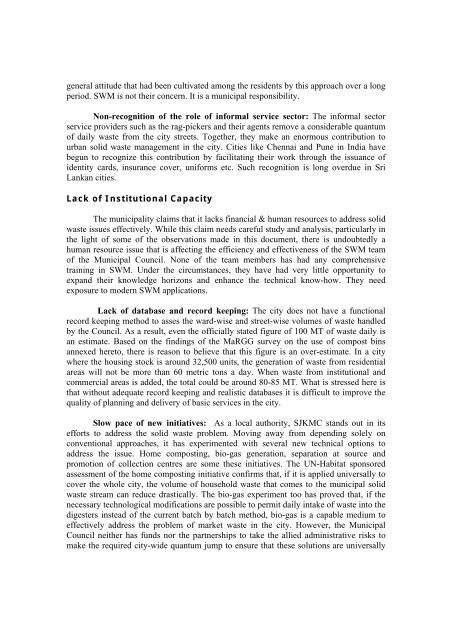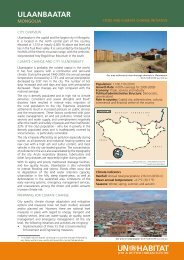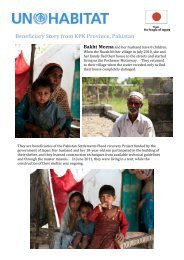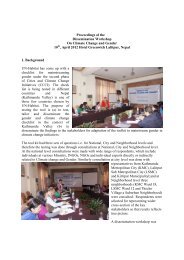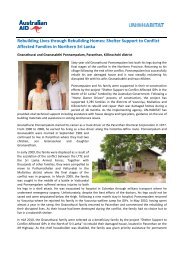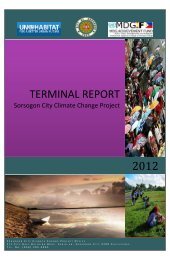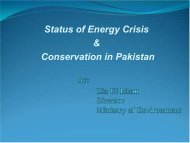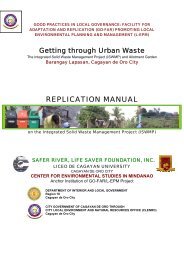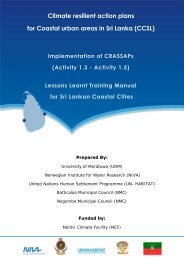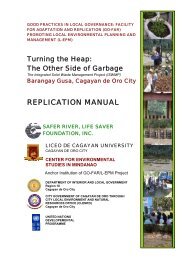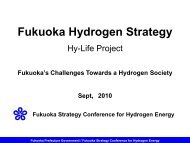Kotte Solid Waste Management Strategy
Kotte Solid Waste Management Strategy
Kotte Solid Waste Management Strategy
Create successful ePaper yourself
Turn your PDF publications into a flip-book with our unique Google optimized e-Paper software.
general attitude that had been cultivated among the residents by this approach over a longperiod. SWM is not their concern. It is a municipal responsibility.Non-recognition of the role of informal service sector: The informal sectorservice providers such as the rag-pickers and their agents remove a considerable quantumof daily waste from the city streets. Together, they make an enormous contribution tourban solid waste management in the city. Cities like Chennai and Pune in India havebegun to recognize this contribution by facilitating their work through the issuance ofidentity cards, insurance cover, uniforms etc. Such recognition is long overdue in SriLankan cities.Lack of Institutional CapacityThe municipality claims that it lacks financial & human resources to address solidwaste issues effectively. While this claim needs careful study and analysis, particularly inthe light of some of the observations made in this document, there is undoubtedly ahuman resource issue that is affecting the efficiency and effectiveness of the SWM teamof the Municipal Council. None of the team members has had any comprehensivetraining in SWM. Under the circumstances, they have had very little opportunity toexpand their knowledge horizons and enhance the technical know-how. They needexposure to modern SWM applications.Lack of database and record keeping: The city does not have a functionalrecord keeping method to asses the ward-wise and street-wise volumes of waste handledby the Council. As a result, even the officially stated figure of 100 MT of waste daily isan estimate. Based on the findings of the MaRGG survey on the use of compost binsannexed hereto, there is reason to believe that this figure is an over-estimate. In a citywhere the housing stock is around 32,500 units, the generation of waste from residentialareas will not be more than 60 metric tons a day. When waste from institutional andcommercial areas is added, the total could be around 80-85 MT. What is stressed here isthat without adequate record keeping and realistic databases it is difficult to improve thequality of planning and delivery of basic services in the city.Slow pace of new initiatives: As a local authority, SJKMC stands out in itsefforts to address the solid waste problem. Moving away from depending solely onconventional approaches, it has experimented with several new technical options toaddress the issue. Home composting, bio-gas generation, separation at source andpromotion of collection centres are some these initiatives. The UN-Habitat sponsoredassessment of the home composting initiative confirms that, if it is applied universally tocover the whole city, the volume of household waste that comes to the municipal solidwaste stream can reduce drastically. The bio-gas experiment too has proved that, if thenecessary technological modifications are possible to permit daily intake of waste into thedigesters instead of the current batch by batch method, bio-gas is a capable medium toeffectively address the problem of market waste in the city. However, the MunicipalCouncil neither has funds nor the partnerships to take the allied administrative risks tomake the required city-wide quantum jump to ensure that these solutions are universally


